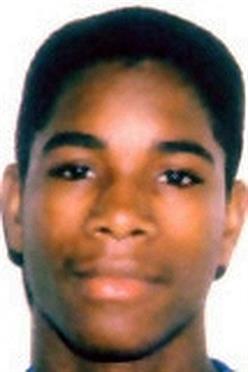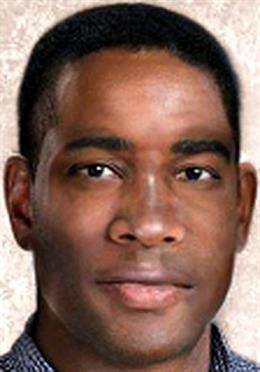Missing Person Photos
A missing person is a person who has disappeared and whose status as alive or dead cannot be confirmed as their location and condition are unknown. A person may go missing through a voluntary disappearance, or else due to an accident, crime, death in a location where they cannot be found (such as at sea), or many other reasons. In most parts of the world, a missing person will usually be found quickly. While criminal abductions are some of the most widely reported missing person cases, these account for only 2 to 5 percent of missing children in Europe.
By contrast, some missing person cases remain unresolved for many years. Laws related to these cases are often complex since, in many jurisdictions, relatives and third parties may not deal with a person's assets until their death is considered proven by law and a formal death certificate issued. The situation, uncertainties, and lack of closure or a funeral resulting when a person goes missing may be extremely painful with long-lasting effects on family and friends.
A number of organizations seek to connect, share best practices, and disseminate information and images of missing children to improve the effectiveness of missing children investigations, including the International Commission on Missing Persons, the International Centre for Missing & Exploited Children (ICMEC), as well as national organizations, including the National Center for Missing & Exploited Children in the US, Missing People in the UK, Child Focus in Belgium, and The Smile of the Child in Greece.

Resources for Missing Persons
According to current statistics, 4,000 people in the United States go missing every day.
Sometimes a child suddenly vanishes from the bus stop or the local park or even from their own yard or bedroom. Or a teenager doesn�t return home after a walk to the neighborhood grocery store or a bike ride or a party with friends.
Other times, an adult is mysteriously absent from their job or neighbors haven�t seen them for several days, and family and friends haven�t heard from them either.
Missing Person Case Updates with Photos
Michael Anthony Bennett


Michael, date, approximate 1989; Age-progression to age 37 (date, approximate 2012)
Date Missing 06/21/1989
Missing From
Brunswick, Georgia
Missing Classification Endangered Missing
Sex Male
Race
Black
Date of Birth 05/14/1975 (47)
Age 14 years old
Height and Weight 5'7, 125 pounds
Markings and/or Distinguishing Characteristics African-American male. Black hair, brown eyes. Michael has a scar on his left knee.
Details of Disappearance Michael and his sister, Monica, were last seen at Heritage Apartments in the 5700 block of Altama Avenue in Brunswick, Georgia on June 21, 1989.
Their mother, Deborah George, and her husband, Robert L. George, were separated, and Michael and Monica were staying with other relatives: Monica with her biological father, and Michael with Robert's first wife and his half-siblings on his father's side. (Robert had still been married to his first wife when Michael was born, and Michael did not take his last name. Robert's first wife treated Michael very well and accepted him into the family. Later, Robert divorced his wife wife and married Deborah, and they had four daughters.)
There are reports that Monica and Michael were helping pack up Robert's apartment in preparation for his upcoming move to Alabama, and that they disappeared after he dropped them off at their mother's residence. However, according to the Bennett children's siblings, Robert's apartment was nearly empty at the time.
Monica was very close to her oldest sister, Shelia Wigfall. By 1989, Wigfall was no longer living at home, although she was still in high school at Glynn Academy, which Michael and Monica also attended. Wigfall was married, pregnant with her first child and living with her in-laws, but she and Monica spoke to each other every day at school.
Early in 1989, Monica had gone to Wigfall at school and said Robert had been sexually abusing her and she didn't want to go home. Wigfall took her to the school guidance counselor's office, and the guidance counselor took them to the police. When Deborah found out about her daughter's allegations, she told the police she didn't believe them and thought Monica was just making the stories up because she didn't want to live at home anymore. The matter was dropped without any follow-up from the authorities.
Even though years earlier Deborah had walked in on Robert sexually abusing her then thirteen-year-old sister, and even after one of Monica's sisters caught Robert trying to sneak into her room at night, Deborah refused to believe Robert was abusing Monica. Michael was very close to Robert and didn't believe Monica's allegations either, until late spring, he walked in on Robert molesting his sister.
Michael told Deborah what he'd seen, and this is when Deborah and Robert separated, Michael moved in with Robert's first wife, and Monica moved in with her biological father. (Little is known about Monica's father, but her family stated she would not have chosen to live with him except for lack of better options.) Robert and Deborah's other children stayed with Deborah and saw their father on weekends.
Michael and Monica disappeared weeks after Robert and Deborah's separation. Although he'd just gotten an apartment in Brunswick, Robert decided to move back to his home state of Alabama. By the day of Michael and Monica's disappearance, Robert's apartment was almost entirely packed up, with only some bedding and essentials still unpacked.
On the afternoon of June 21, Robert went to his ex-wife's house and told Michael to get in the car with him so Michael could help him pack. Michael didn't want to go with him and was crying when they left together. Robert then picked Monica up from her father's house, and they went to Robert's apartment complex.
The children's aunt also lived at the complex, across the courtyard from Robert's apartment, and Michael and Monica made a surprise visit to her before dark that evening and had something to eat at her apartment. When she walked them out at about 8:30 p.m., she saw Robert outside.
Michael and Monica walked away, and Robert spoke to the children's aunt and asked her to intercede with Deborah and get her to let him come home. The aunt called Deborah on a pay phone, and then Robert spoke to Deborah on the phone, as Monica and Michael walked up the hill ahead and out of sight. This is the last time anyone besides Robert saw them.
Robert later gave two different stories about his son and stepdaughter's disappearances: one was that they ran out of his apartment while he was there and never came back, and the second was that he dropped them off at the apartment and went away to run some errands, and when he returned they were gone.
(Curiously, the police report about Michael and Monica's disappearance said that Robert called Deborah at 8:30 p.m. to say the children were missing. Robert was speaking to Deborah on the phone at about that time, according to the children's aunt, but Monica and Michael were still within eyesight.)
According to Michael and Monica's younger sisters, later that evening Robert picked them up from their mother's home and drove in the streets around John's apartment complex slowly, looking around. He didn't call Michael or Monica's names or ask any passersby if they'd seen them. He then took the children to his apartment. One of the girls recalled that one of the beds at the apartment was missing its sheets and comforter, and she noticed two trash bags in the apartment by the front door, which Robert said contained Monica and Michael's belongings.
Within a few days, Robert's car disappeared; his children never found out what had happened to it. He and Deborahreconciled within a few weeks of Michael and Monica's disappearances, took their remaining children and moved to Alabama on a bus, leaving Wigfall behind in Georgia.
Many of Monica and Michael's relatives believe Robert was involved in their disappearances. Deborah's mother described him as a controlling, manipulative and violent husband who occasionally beat Deborah, and Michael and Monica's younger siblings also remember episodes of violent behavior by their father. After the move to Alabama, Deborah would occasionally leave her husband, but would always return to him. Often when she left, she would leave their children behind in his care.
Robert's brother has also been mentioned as possibly having been involved in Michael and Monica's s, or at least knowing what happened to them. He had lived with the family off and on for years, and Robert had also lent him money. Wigfall stated he sexually abused her when she was young, and Deborah had warned the other children to stay away from him.
For decades after Michael and Monica disappeared, the police wrote them off as runaways; both Robert and Deborah said they had run away, and that Monica had a boyfriend who was involved with drugs. The police took reports for their disappearances but didn't actually investigate until the early 2000s, when the children were reclassified as "endangered missing."
The Bennett children didn't take any money or belongings when they disappeared, and there's been no record of their existence anywhere in the country since 1989. Foul play is now suspected in Michael and Monica's disappearances.
Investigating Agency
Glynn County Police Department
912-267-5700
Other
The National Center for Missing and Exploited Children
The Brunswick News
WSAV
The Fall Line Podcast
Websleuths
Missing Person Photos
A missing person is a person who has disappeared and whose status as alive or dead cannot be confirmed as their location and condition are unknown. A person may go missing through a voluntary disappearance, or else due to an accident, crime, death in a location where they cannot be found (such as at sea), or many other reasons. In most parts of the world, a missing person will usually be found quickly. While criminal abductions are some of the most widely reported missing person cases, these account for only 2 to 5 percent of missing children in Europe.
By contrast, some missing person cases remain unresolved for many years. Laws related to these cases are often complex since, in many jurisdictions, relatives and third parties may not deal with a person's assets until their death is considered proven by law and a formal death certificate issued. The situation, uncertainties, and lack of closure or a funeral resulting when a person goes missing may be extremely painful with long-lasting effects on family and friends.
A number of organizations seek to connect, share best practices, and disseminate information and images of missing children to improve the effectiveness of missing children investigations, including the International Commission on Missing Persons, the International Centre for Missing & Exploited Children (ICMEC), as well as national organizations, including the National Center for Missing & Exploited Children in the US, Missing People in the UK, Child Focus in Belgium, and The Smile of the Child in Greece.

Resources for Missing Persons
According to current statistics, 4,000 people in the United States go missing every day.
Sometimes a child suddenly vanishes from the bus stop or the local park or even from their own yard or bedroom. Or a teenager doesn�t return home after a walk to the neighborhood grocery store or a bike ride or a party with friends.
Other times, an adult is mysteriously absent from their job or neighbors haven�t seen them for several days, and family and friends haven�t heard from them either.
Missing Person Case Updates with Photos